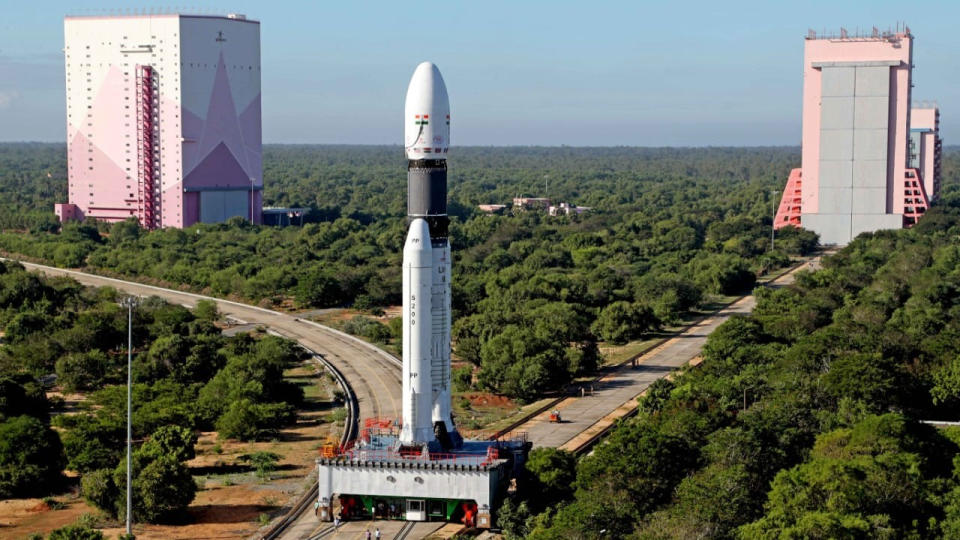When you buy through links on our articles, Future and its syndication partners may earn a commission.

India has greenlit four major space projects, including the Chandrayaan-4 moon sample return mission, a Venus orbiter and the nations first space station module.
The Indian government allocated $2.7 billion for the ambitious projects, a substantial investment that officials say is certain to encourage “maximum participation” from the nation’s burgeoning private sector.
“India’s ambitious space vision and roadmap have now been given the wings to fly high,” ISRO chairman S. Somanath told Indian news channel NDTV.
The $2.7 billion was approved on Wednesday (Sept. 18) by the nation’s cabinet chaired by Prime Minister Narendra Modi. The funds include $253 million (21 billion rupees) for India’s return to the moon with the Chandrayaan-4 mission, which aims to collect an unspecified mass of samples at Shiv Shakti Point, the landing site of the now-dormant Chandrayaan-3 spacecraft near the lunar south pole. The region is of much interest to spacefaring nations thanks to its apparent abundance of water ice, which scientists think can be mined for life support and rocket fuel.
Back to the moon with Chandrayaan-4
Chandrayaan-4 will be a complex endeavor that will launch four modules across two LVM-3 rocket launches. The first rocket will ferry a lander and a sample-collecting ascender vehicle that will land on the rim of an unspecified crater near the moon’s south pole, while the second rocket will fly a transfer module and a reentry module and remain parked in moon orbit. The ascender will launch from the moon’s surface once samples have been collected and transfer its precious cargo to the re-entry module, which will then head back toward Earth for a safe touchdown. And that’s no easy feat, scientists say.
“There is a significant engineering challenge to solve when it comes to being able to launch back from the lunar surface, escape lunar gravity, and come back to earth,” Anil Bhardwaj, the director of the Physical Research Laboratory in Gujarat who is involved with many of India’s planetary missions, told Indian daily newspaper Mint.
Nevertheless, the Indian government is pushing ahead with the ambitious sample return plan to continue establishing the nation as a space superpower. “The mission would enable India to be self-sufficient in critical foundational technologies for manned missions, lunar sample return and scientific analysis of lunar samples,” according to a government statement released Wednesday. “This mission will also ensure the establishment of facilities for curation and analysis of the returned samples, which will be national assets.”
Chandrayaan-4’s complex architecture will demonstrate homegrown technology that will set the foundation for India’s goal of landing an astronaut on the moon by 2040, the statement reads.


First space station module development
The price tag for India’s Gaganyaan human spaceflight program is now $2.4 billion (201 billion rupees) after the cabinet granted an additional $1.35 billion (111 billion rupees) on Wednesday. The expanded budget will support additional hardware requirements and the fourth uncrewed test flight for the mission, according to a cabinet statement.
The first test flight, called G1, is scheduled for later this year, with subsequent flights, G2, G3 and the newly-added G4 to be completed by 2026, the statement read.
The country has already revealed four Indian Air Force pilots who will crew the first Gaganyaan flight, H1, scheduled to lift off next year. The crew will spend three days in orbit at roughly 250 miles (400 kilometers) above Earth. If successful, India will become only the fourth country with the ability to independently launch people into space, after the United States, Russia and China.
On Wednesday, cabinet officials also gave their nod for the development of the first module of India’s space station, which is called the Bharatiya Antariksh Station, or BAS. The station’s first module, BAS-1, will be launched to low Earth orbit (LEO) by December 2028 and the entire station will be operational by 2035, according to the recent government statement.


Venus orbiter ‘Shukrayaan’ delayed to 2028
On Wednesday, the cabinet also approved roughly $147 million (12.36 billion rupees) for India’s first mission to Venus, known as the Venus Orbiter Mission (VOM), or “Shukrayaan.” The orbiter’s targeted launch is now March 2028, five years later than planned, according to a government statement.
$99 million (8.2 billion rupees) will be spent on the spacecraft, which is being developed by ISRO. The remaining budget will fund the development of science payloads, ground station support and the launch vehicle, the statement read.
The mission will carry a suite of science instruments to gather data about Venus’ atmosphere, geology and evolution to shed light on why its environment differs so much from Earth despite the two planets being nearly the same size and having received equal amounts of water billions of years ago.
The Next Generation Launch Vehicle, or NGLV, which India sees as key to establishing and operating India’s space station and enabling crewed moon landings, received $994 million (82.4 billion rupees) for its development, including three test flights over the next eight years.
RELATED STORIES:
— Watch India’s reusable space plane prototype ace its final landing test (video)
— India aims to achieve ‘debris-free’ space missions by 2030
— India unveils astronauts for 1st human spaceflight mission in 2025
NGLV has the lifting capability of 33 tons (30 tonnes), which is three times the current LVM3 rockets at 1.5 times the cost, cabinet minister Ashwini Vaishnaw said on Wednesday. The launch vehicle will have a reusable first stage to allow low-cost access to space, a separate government statement read.
India plans to use the rocket to help build its planned space station and one day place its astronauts on the lunar surface. “This will bring us closer to establishing the Bharatiya Antariksh Station and achieving a crewed moon landing by 2040,” Modi said on Wednesday in a post on X (formerly Twitter).
Source Agencies

